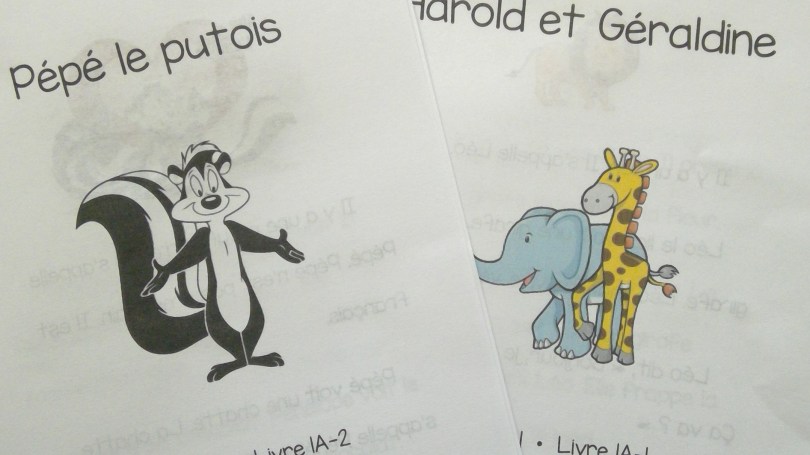We have a great setup for speaking assessments at Webb. It’s by far one of my favorite parts of the job. Walk down the halls of the Big Room, and you’ll see cozy café tables and chairs backed by scenes of Parisian cafés. This is where teachers and students sit down for one-on-one speaking assessments every few weeks or so while classmates complete written tasks back in the classroom.
I couldn’t ask for a better setting for speaking assessments, but I have come to want more from them. After a few years, I’ve realized that the speaking assessments were always about me. I’m the one starting the conversation. I’m the one asking for more detail and moving from one topic to the next.
I like to think my students will one day reach a level where they might actually sit down with a native French speaker who’s asking them all about their lives, what they want to do over the weekend, what their classes are like, and so on. Some of my students will go on to that experience when they travel to France with me. But the truth is, that reality is far away for most of my students who are in beginning-level courses. How many questions will the hotel clerk really ask them? Will a waiter sit down and ask about their weekend?
There’s so much more talking that my students need to be able to do if they want to navigate their way successfully around France. And in all those situations, it’s much more likely that they will be the ones who truly initiate the conversation. They’re the ones who will be asking how much something costs, calling to make a reservation, jotting down directions around town, and so on.
With that reality in mind, I decided to switch up the format of my speaking assessments this semester. The student receives the prompts. The student asks the questions and makes notes. All I have is a list of details or information to refer to in answering the student.
I was leery about making this huge change with little warning. Honestly, looking back at the lessons from the first semester, I’m not sure I was really preparing students to take the active role in a conversation. It all turned out in the end, though. And after a few rounds of these assessments, I’m starting to get a very good answer to the question “Are my students ready to go to France?”
I’ve also noticed some really cool and unexpected side effects of putting students in the driver’s seat on speaking assessments. In particular:
- Students take in-class speaking tasks more seriously. They know they really need to practice whatever model I’ve offered because they’ll be doing that same kind of thing on a speaking assessment. There are fewer students who sit around and wait for partners or who coast through tasks like mindless robots.
- Students are really thinking about communication strategies like circumlocution. The stakes are so much higher for vocabulary recall now, and they’ve come to understand that every word and expression is a tool in the toolbox that may help them work through the moments when they’ve forgotten something else. I’m willing to continue with the task as long as they’re using French. I’ll play dumb if they try to use the English word “boat”, but if they say something like “it’s like a car but goes on water”, I’ll play along and try to figure out what they mean.
- It’s fun to see students get creative with the language and strategize by approaching prompts from different angles. One student might ask “Where did you eat dinner?” Another student, who has forgotten the word for “where”, might give me choices instead. Again, they know I’ll continue working through the task with them as long as they’re speaking French.
- The shy parrots are beginning to take flight. It’s no longer enough for them to answer my questions with a “yes” or “no” or a tiny variation on the question I asked. They have to find the skills and courage to be in control of the communicative situation, and it’s very rewarding to see them embrace those inner strengths.
Perhaps the best part of it all is the challenge on my end. These kinds of speaking assessments require a lot of backwards planning, beginning with the question “How might my students actually use this content in real life?” The answer needs to produce brief, clear and logical prompts. These assessments are timed, and I don’t want students to waste time trying to figure out the nuances of a stilted scenario. If content doesn’t fit that framework, what’s the point of teaching it? The answers to those questions provide a lot of inspiration for meaningful classwork.
There’s a place for the traditional interview-style speaking assessment. I don’t want to overwhelm complete beginners with expectations that stretch far beyond typical production for their level, and I wouldn’t want higher-level students to spend years asking when things are going to happen and how much things cost when they’re ready to talk about possibilities, contingencies and opinions. However, I do think the student-driven speaking assessment is right for most of the levels I teach. It’s done a lot to foster the transition between absolute beginners and confident speakers, and that’s exactly what I want my students to achieve.







